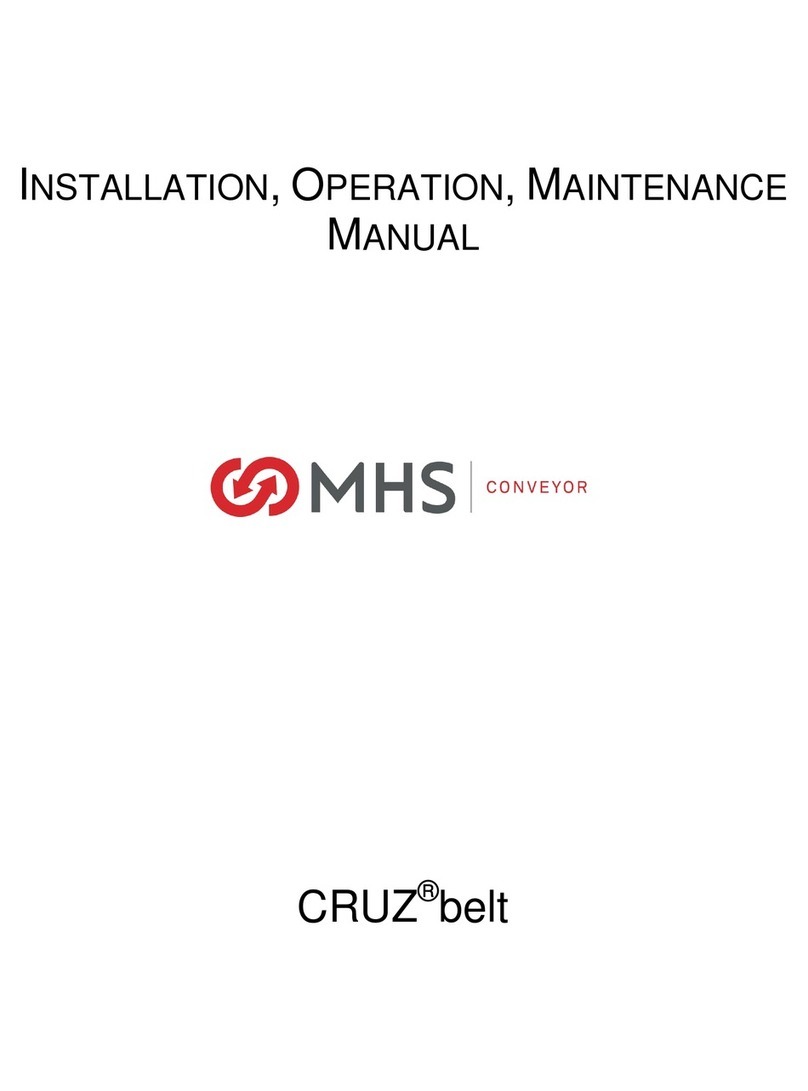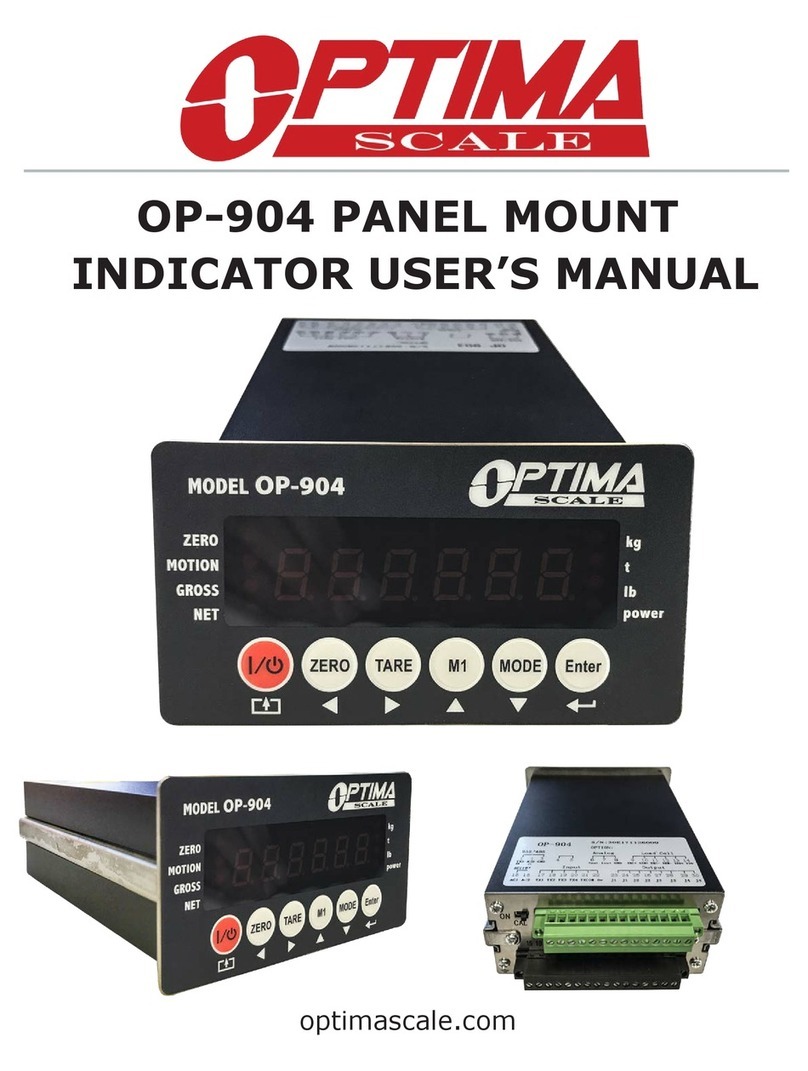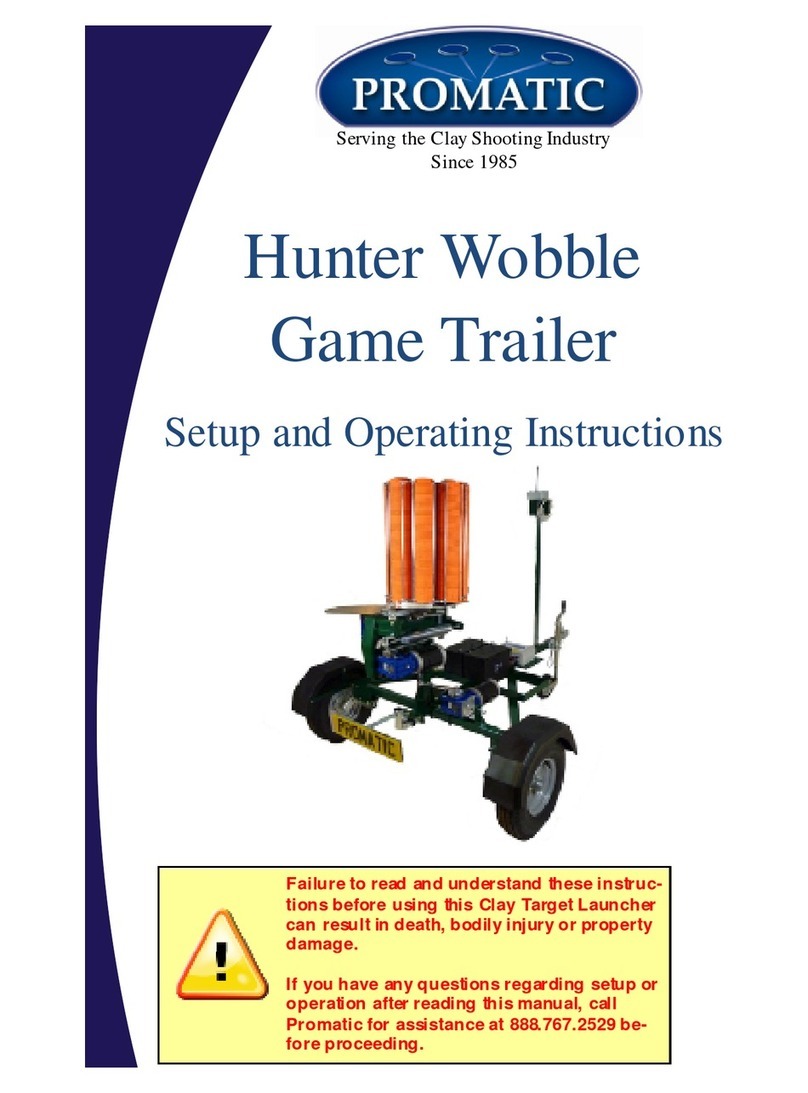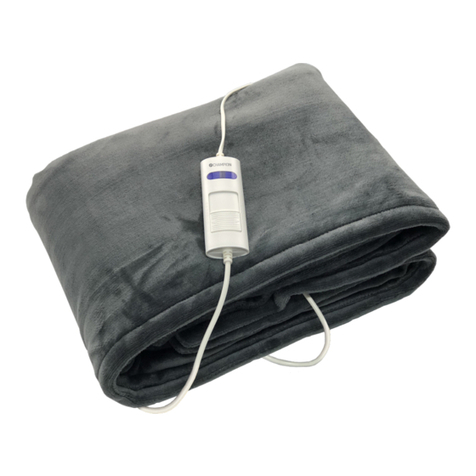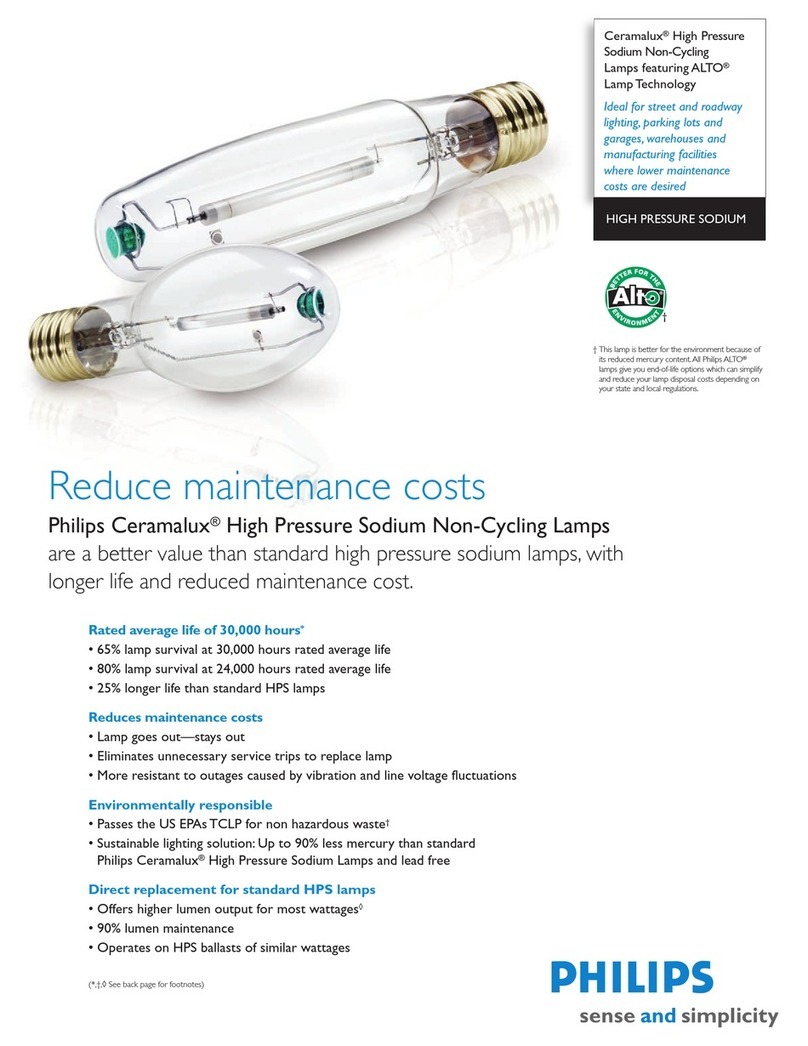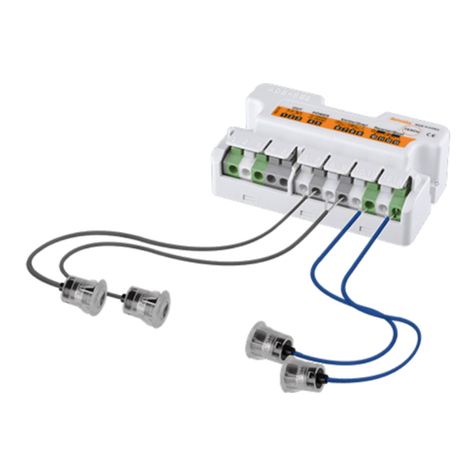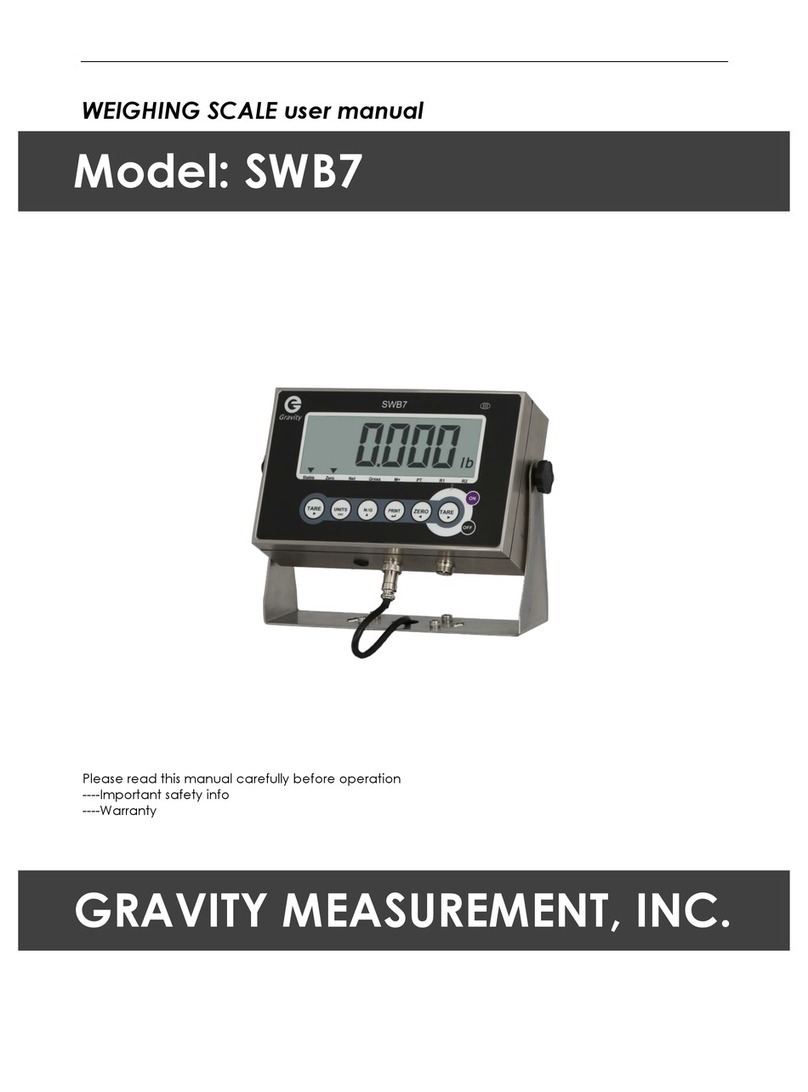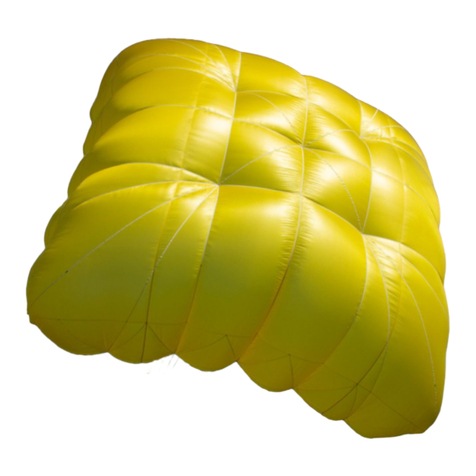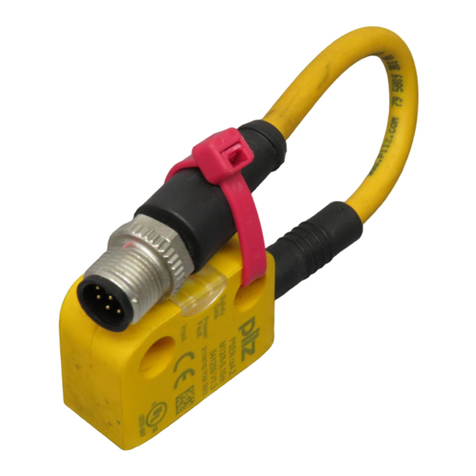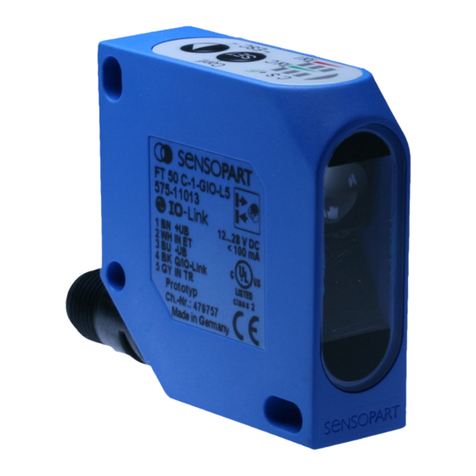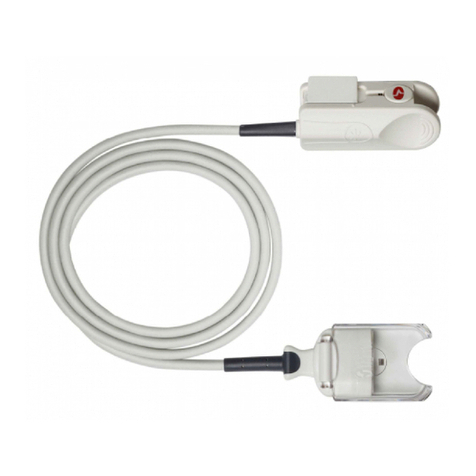MHS Boilers XenoROL XR40 Instruction manual

XenoROL®
1
INSTALLATION,OPERATION,MAINTENANCE
MANUAL
XenoROL®
XR40 and XR48
90480006rev092010

XenoROL®
2
Table of Contents
INSTALLATION,OPERATION,MAINTENANCE MANUAL.......................................................................................................... 1
Table of Contents ...................................................................................................................................................... 2
PURPOSE.................................................................................................................................................................... 6
EQUIPMENT WARRANTY ........................................................................................................................................... 7
WARNINGS & SAFETY INSTRUCTIONS ....................................................................................................................... 8
XENOROL CONCEPT ............................................................................................................................................ 10
PRECAUTIONS ..................................................................................................................................................... 10
DEFINITION OF TERMS........................................................................................................................................ 10
CAPACITY OF ROLLERS/FRAME .......................................................................................................................... 12
MINIMUM PRESSURE ACCUMULATION............................................................................................................. 12
REDUCTION OF LINE PRESSURE.......................................................................................................................... 12
RECEIVING & SITE PREPARATION ............................................................................................................................ 13
GENERAL.............................................................................................................................................................. 13
PREPARATION OF SITE........................................................................................................................................ 13
PARTS INVENTORY & IDENTIFICATION .............................................................................................................. 13
TYPICAL XenoROL LOOSE PARTS ........................................................................................................................ 14
GENERAL PROCEDURES ........................................................................................................................................... 15
DIMENSIONAL REFERENCE POINTS .................................................................................................................... 15
ELEVATIONS ........................................................................................................................................................ 15
TYPICAL LAYOUT/LEGEND .................................................................................................................................. 16
LAYOUT DIMENSIONS.............................................................................................................................................. 18
SUPPORTING ARRANGEMENTS ............................................................................................................................... 19
FLOOR SUPPORTS ............................................................................................................................................... 19
Beds should be checked for squareness before.................................................................................................. 20
KNEE BRACES....................................................................................................................................................... 20
CEILING HANGERSS ............................................................................................................................................. 21
SWAY BRACING (CEILING HANGER) ................................................................................................................... 22
DIAGONAL SWAY BRACE (FLOOR SUPPORT) ..................................................................................................... 22
MULTI-LEVEL XENOROL® SUPPORT.................................................................................................................... 23
BASICS OF XenoROL INSTALLATION ........................................................................................................................ 24
GENERAL.............................................................................................................................................................. 24
SUBASSEMBLY INSTALLATION ................................................................................................................................. 27
90480006rev092010

XenoROL®
3
DRIVES ................................................................................................................................................................. 27
CURVES................................................................................................................................................................ 27
JUMP CHAINS/BELTS .......................................................................................................................................... 28
MERGE ASSEMBLY .............................................................................................................................................. 29
SPURS .................................................................................................................................................................. 29
TRAFFIC CONTROLLER......................................................................................................................................... 30
XENOSWITCH ASSEMBLY.................................................................................................................................... 30
WHEEL DIVERTER ASSEMBLY.............................................................................................................................. 31
URETHANE BELT TRANSFER (UBT)...................................................................................................................... 32
UBT XenoBRAKE.................................................................................................................................................. 33
PIVOTING ROLLER STOP...................................................................................................................................... 33
RIGHT ANGLE CONNECTION/URETHANE BELT TRANSFER MODULE (RAC/UBT MODULE) .............................. 34
XenoBRAKES........................................................................................................................................................ 35
POWERED GATE ASSEMBLY................................................................................................................................ 36
ROLLERS............................................................................................................................................................... 37
STRAIGHT ROLLERS .......................................................................................................................................... 37
TAPERED ROLLERS ........................................................................................................................................... 37
ROLLER INSTALLATION .................................................................................................................................... 37
LINE-SHAFT GUARDS........................................................................................................................................... 38
GUARDS FOR INCLINED STRAIGHT SECTIONS.................................................................................................. 38
GUARD RAILS ...................................................................................................................................................... 39
ANGLE GUARD RAIL ......................................................................................................................................... 39
ADJUSTABLE CHANNEL GUARD RAIL ............................................................................................................... 39
AIR SUPPLY REQUIREMENTS ................................................................................................................................... 40
GENERAL.............................................................................................................................................................. 40
AIR CONSUMPTION ............................................................................................................................................ 40
PRESSURE SWITCH .............................................................................................................................................. 40
ELECTRICAL .............................................................................................................................................................. 41
GENERAL.............................................................................................................................................................. 41
SAFETY GUIDELINES ............................................................................................................................................ 41
COMMISSIONING OF EQUIPMENT .......................................................................................................................... 43
GENERAL.............................................................................................................................................................. 43
COMMON ADJUSTMENTS .................................................................................................................................. 43
90480006rev092010

XenoROL®
4
DRIVE BELT BREAK-IN ......................................................................................................................................... 43
PREVENTIVE MAINTENANCE ................................................................................................................................... 44
GENERAL.............................................................................................................................................................. 44
MOTOR AND GEARCASE ..................................................................................................................................... 44
CHAINS AND SPROCKETS .................................................................................................................................... 44
ROLLERS............................................................................................................................................................... 47
DRIVE BELTS ........................................................................................................................................................ 48
LINE-SHAFT BEARINGS ........................................................................................................................................ 48
MOTOR CONTROLS ............................................................................................................................................. 48
UNIVERSAL JOINTS.............................................................................................................................................. 48
COUPLER SPROCKETS/CHAINS ........................................................................................................................... 49
GUIDE POSTS....................................................................................................................................................... 49
AIR SYSTEMS ....................................................................................................................................................... 49
MAINTENANCE SCHEDULE ...................................................................................................................................... 50
LUBRICATION GUIDE ............................................................................................................................................... 51
Troubleshooting Guide............................................................................................................................................ 52
TROUBLESHOOTING GUIDE-MECHANICAL.............................................................................................................. 54
TROUBLESHOOTING GUIDE-MECHANICAL.............................................................................................................. 54
TROUBLESHOOTING GUIDE-MECHANICAL.............................................................................................................. 55
TROUBLESHOOTING GUIDE-MECHANICAL.............................................................................................................. 57
TROUBLESHOOTING GUIDE-MOTOR/REDUCER ...................................................................................................... 58
TROUBLESHOOTING GUIDE-MOTOR/REDUCER ...................................................................................................... 60
TROUBLESHOOTING GUIDE-ELECTRICAL................................................................................................................. 61
REPAIR PROCEDURES............................................................................................................................................... 62
COUPLER CHAINS................................................................................................................................................. 62
CHAIN & SPROCKETS ........................................................................................................................................... 62
SPROCKET ALIGNMENT ....................................................................................................................................... 62
CHAIN TENSION ................................................................................................................................................... 62
TENSION ADJUSTMENT ....................................................................................................................................... 62
CHAIN/SPROCKET REPLACEMENT ON LINE-SHAFT ............................................................................................. 63
UNIVERSAL JOINTS .............................................................................................................................................. 63
LINE-SHAFT BEARINGS (STANDARD) ................................................................................................................... 63
Parts Identification .................................................................................................................................................. 69
90480006rev092010

XenoROL®
5
PARTS IDENTIFICATION ........................................................................................................................................... 70
PARTS IDENTIFICATION ........................................................................................................................................... 71
PARTS IDENTIFICATION ........................................................................................................................................... 72
PARTS IDENTIFICATION ........................................................................................................................................... 73
PARTS IDENTIFICATION ........................................................................................................................................... 74
PARTS IDENTIFICATION ........................................................................................................................................... 75
PARTS IDENTIFICATION ........................................................................................................................................... 76
PARTS IDENTIFICATION ........................................................................................................................................... 77
PARTS IDENTIFICATION LIST .................................................................................................................................... 78
PARTS IDENTIFICATION LIST .................................................................................................................................... 79
ADDITIONAL REPLACEMENT PARTS ........................................................................................................................ 80
XR40/48 DRIVE BELT DATA...................................................................................................................................... 81
DRIVE PARTS IDENTIFICATION................................................................................................................................. 82
LOW PROFILE DRIVE DATA ...................................................................................................................................... 83
MISSION..................................................................................................................................................................... 84
90480006rev092010

XenoROL®
6
PURPOSE
It isthe intent of MHS Conveyor,through this manual, to provide information that acts as
aguide in the installation, operation and maintenance of MHS Conveyor XenoROL conveyors.
This manual describes basic installation practices, assembly arrangements, preventive
maintenance, repair procedures, troubleshooting, service internals and assists in replacement
parts identification.
If additional copies of this manual are needed or if you have any question concerning the
conveyor, please contact your distributor or the MHS Conveyor Customer Service at (231)
798-4547 or Fax .(231) 798-4146.
90480006rev092010

XenoROL®
7
EQUIPMENT WARRANTY
MHS Conveyor warrants that the material and workmanship entering into its equipment is
merchantable and will be furnished in accordance with the specifications stated.
MHS Conveyor agrees to furnish the purchaser without charge any part proved defective within 2
years from date of shipment or before the equipment has forty-one hundred (4100) hours of
running use, whichever period is shorter, provided the purchaser gives MHS Conveyor immediate
notice in writing and examination proves the claim that such materials or parts were defective when
furnished. For drive components specific to XenoROL® (i.e. Xeno belts, slave Xeno belts, drive
spools, standard and speed-up, and spacers), this warranty shall be extended to five years or ten
thousand (10,000) hours of running use, whichever period is shorter, provided the conveyors are
applied, installed and maintained in accordance with MHS Conveyor published standards. Other than
the above, there are no warranties which extend beyond the description on the face hereof.
Consequential damages of any sort are wholly excluded.
The liability of MHS Conveyor will be limited to the replacement cost of any defective part. All
freight and installation costs relative to any warranted part will be at the expense of the purchaser. Any
liability of MHS Conveyor Systems under the warranties specified above is conditioned upon the
equipment being installed, handled, operated, and maintained in accordance with the written
instructions provided or approved in writing by MHS Conveyor.
The warranties specified above do not cover, and MHS Conveyor makes no warranties which extend
to, damage to the equipment due to deterioration or wear occasioned by chemicals, abrasion,
corrosion or erosion; Purchaser's misapplication, abuse, alteration, operation or maintenance;
abnormal conditions of temperature or dirt; or operation of the equipment above rated capacities or in
an otherwise improper manner.
All equipment and components not manufactured by MHS Conveyor carry only such warranty as
given by the manufacturer thereof, which warranty MHS Conveyor will assign or otherwise make
available to Purchaser without recourse to MHS Conveyor, provided that such warranty is
assignable or may be made available.
IMPORTANT
For service on motors, reduction units, electrical components, controls, air or hydraulic cylinders,
contact the local authorized sales and service representative of respective manufacturer. If none is
available in your locality, contact the MHS Conveyor representative. MHS Conveyor will not
be responsible for units that have been tampered with or disassembled by anyone other than
the authorized representative of the respective manufacturer.
THERE ARE NO WARRANTIES, EXPRESSED OR IMPLIED, INCLUDING, BUT NOT LIMITED TO,
WARRANTIES OF MERCHANTABILITY OR FITNESS FOR A PARTICULAR PURPOSE, EXTENDING
BEYOND THOSE SET FORTH IN THIS STATEMENT OF WARRANTY.
Rev 04/08/2009
90480006rev092010

XenoROL®
8
WARNINGS & SAFETY INSTRUCTIONS
Failure to follow the instructions, warnings, and
cautions throughout this book, and warning
labels on the conveyor may result in injury to
personnel or damage to the equipment.
Your MHS Conveyor is powered by a motor and
can be stopped only by turning off electrical
power to the motor. As with all powered
machinery, the drive related components
including sprockets, chains, shafts, universal
joints and pneumatically actuated devices
present a danger. We have installed or
provided guards to prevent inadvertent contact
with these components along with warning labels
to identify the hazards.
Special attention must be paid to the following
areas of this manual:
WARNING
This is a notice which, if not followed, could result in
serious injury or death.
CAUTION
This is a notice, which if not followed, could result in
damage to equipment
NOTE: This is where you will be notified of helpful
information.
After maintenance, REPLACE guards immediately.
Keep ALL warning labels clean and clear of any
obstructions. Never remove, deface or paint over
WARNING or CAUTION labels. Any damaged
label will be replaced by MHS Conveyor at no
cost by contacting the Customer Service
Department.
It is very important to instruct personnel in
proper conveyor use including the location and
function of all controls. Special emphasis must
be given to emergency stop procedures. It is
important to establish work procedures and
access areas which do not require any part of a
person to be under the conveyor. It should be
required that long hair is covered by caps or hair
nets. Walking on or riding moving conveyor is
prohibited. Lock out power before removing
any guarding. Loose clothing, long hair, and
jewelry must be kept away from moving
equipment.
Maintain enough clearance on each side of
all conveyor units for safe adjustment and
maintenance of components. Provide
crossovers or gates at sufficient intervals to
eliminate the temptations to climb over or under
any conveyor. Prohibit riding or walking on
conveyor by anyone.
Remove all unused coupler sprockets. At open
ends (termination) of XenoROL conveyors, add
the set collar provided to the end of the line-shaft
and install the line-shaft end cover. The set collar
and orange end cover are found in the loose
parts box.
90480006rev092010

XenoROL®
9
90480006rev092010

XenoROL®
10
Introduction To XenoROL
XENOROL CONCEPT
XenoROL rollers are driven by pretensioned
polyurethane belts which pull the drive spools
against the line-shaft. Each spool delivers a
fixed amount of torque from the line-shaft to the
rollers. This torque is based on the drive belt
tension and coefficient of friction between the
spool and line-shaft. If the torque requirement to
drive the load on the rollers exceeds the fixed
torque of the spool, the spool slips on the line-
shaft like a clutch.
XenoROL conveyor allows unequaled versatility with
high speed, complete reversibility and minimum
pressure accumulation. A major benefit of XenoROL
line-shaft driven conveyor is the ability to power
straight sections and curves plus auxiliary devices
from a single drive. Auxiliary equipment includes:
transfers, spurs, adjoining parallel sections, merges,
switches, sortation devices, powered guard rails, etc.
PRECAUTIONS
TEMP. RANGE (AMBIENT): 35°F to 100°F. For
temperature applications outside this range,
consult the Distributor Services Department.
ULTRAVIOLET RAYS: Avoid exposure of
polyurethane belts to sunlight.
OILY OR WET CONDITIONS: Will impair frictional
drive characteristics between spool and line-shaft.
CORROSIVE OR ABRASIVE SUBSTANCES: Will
adversely affect various components, voiding the
warranty
DEFINITION OF TERMS
Accessory - A device that receives power from and
contributes to the horsepower requirement of the
line-shaft.
Accumulation (Minimum Pressure) - Act of queuing,
holding, or backing up of product on a conveyor.
Carrying Roller - The conveyor roller upon which the
object being transported is supported. It has a
circumferential groove near one end to allow the
drive belt to ride below the carrying surface.
Coefficient of Friction - A numerical expression of
the ratio between the force of contact between two
surfaces and the resistant force tending to oppose
the motion of one with respect to the other.
Conveyor Width - The dimension outside to outside
of frame rails. For the inside dimension, the
abbreviation used is "BF" (between frames).
Coupler - A mechanical device which connects
segments of the line-shaft.
Coupler Chain - A double wide chain, plastic or
metal, which performs the function of connecting
one sprocket to an adjacent sprocket.
Coupler Sprocket - A sprocket located at the
extreme end of a line-shaft, positioned to allow
connection to a second sprocket on another line-
shaft by using a coupler chain.
Crossmember - Structural member which is
assembled between two side channels of a
conveyor bed.
Drive - An assembly of mechanical, electrical, and
structural components to provide power to line-shaft.
Drive Belt - An endless round belt manufactured
from elastic material, typically urethane, connecting
spools to carrying rollers for transmitting rotation of
line-shaft.
Drive Sprocket - The sprocket which propels the
chain or synchronous belt.
Driven Sprocket - The sprocket which is propelled by
the chain or synchronous belt.
90480006rev092010

XenoROL®
11
Frame - The structure which supports the
components of a conveyor bed consisting of formed
channel rails bolted together with square tubing
crossmembers.
Guard Rail - Members paralleling the path of a
conveyor and limiting the unit loads to movement in
a defined path.
Jump Chain - A drive chain or belt which transmits
power from one line-shaft to an adjacent parallel
line-shaft. A crossover between adjacent line-shafts
within a common conveyor frame is called an
internal jump chain. A crossover between a line-
shaft in one conveyor frame and a line-shaft in an
adjacent parallel conveyor frame is called an
external jump chain.
Line-shaft - Shaft which runs longitudinally within
line-shaft conveyor to provide power transmission to
carrying rollers and accessory equipment.
Line-shaft Bearing - The pillow block style bearings
in which the line-shaft rotates.
Line-shaft Curve - A curved conveyor section
equipped with a line-shaft segmented with
universals to change the direction of product travel
horizontally. The curve radius is measured to the
inside face of the inside frame rail.
Line-shaft Guard - Provided to prevent entanglement
in rotating parts.
Roller Centers - Distance between center lines of
adjacent rollers. For curves, roller centers are
measured at the inside radius.
Roller Groove - The groove that is fabricated into the
carrying roller to provide a seat for the drive belt
below the carrying surface.
Speedup Spool - (See spool) A spool of larger
diameter than adjacent spools assembled to the
line-shaft. The difference in diameters causes those
carrying rollers powered by the speedup spools to
rotate faster than those driven by the smaller spools
when driven by the same line-shaft.
Spool (Pulley) - A sheave or concave cylinder
assembled on the line-shaft with slip fit to provide
friction drive to carrying rollers but also “slip” in case
of stalled carrying rollers. Also contains and protects
drive belt.
Sprocket Ratio - The ratio of the number of teeth of
the driven sprocket to the drive sprocket.
Tapered Roller - A conical conveyor roller for use in
a curve with end and intermediate diameters
proportional to their radius.
Universal Joints - A device used to connect two
intersecting line-shafts whose axes are not in a
straight line.
XenoBRAKE®- Pneumatically operated pad
mounted below the conveyor rollers used to stop the
carrying rollers upon signal by a sensor.
90480006rev092010

XenoROL®
12
CAPACITY OF ROLLERS/FRAME
DRIVE PER ROLLER BY TYPE OF BOTTOM
Product Bottom
Drive Capacity per Roller (lbs.)
(Conveying Surface)
XR40
XR48
1-4" Dia. Belts
3/16"
Std.
5/32"
Option
1/8"
Option
12-
3/4"
Std.
13-
1/2"
Option
Soft, weak bottom, load unbalanced, uneven bottom, with
noticeable bumping. Ex.: plastic totes, wire or steel baskets,
lightweight corrugated (always use 3" centers).
15
10
6
30
25
Slight indentation, less than even loading. Ex.: normal
corrugated and plastic totes (includes most applications).
20
14
9
40
34
Firm, flat bottom and uniform loading. Ex.: heavy wall
corrugated, double w
all corrugated and stiff treated
materials
25
17
11
50
42
Hard & flat bottom, retaining some flexibility, uniform load
distribution. Ex.: plywood and fiberboard.
30
20
13
60
50
Note: Optional bearings with seals may reduce the roller drive capacity.
If product conveys hard against the guard rail (ex. where a transfer is used to square product
against the guard rail), reduce the capacity by 25%.
FRAME CAPACITY
Frame Channel Depth
Support Centers (lbs./ft.)
10’
9’
8’
7’
6’
5’
XR40 4-1/2" Deep
60#/ft.
90#/ft.
145#/ft.
235#/ft.
395#/ft.
710#/ft.
XR40/XR48 9" Deep
215#/ft.
305#/ft.
450#/ft.
670#/ft.
1115#/ft.
1960#/ft.
Note: The 4-1/2" deep frame has more capacity when supported on 8’ c
enters than
XR40 roller drive capacity. The 9" deep frame has more capacity when supported
on 9’ centers than XR40 or XR48 roller drive capacity.
MINIMUM PRESSURE ACCUMULATION
When conveyed product is stopped, the friction
between the product and the roller stops the roller,
drive belt and spool. Though the shaft continues to
turn, only minimal friction exists between the inner
surface of the spool and the line-shaft surface. The
pressure of accumulated product is independent of
its weight and is determined by the belt tension.
Average lbs. Pressure per roller
XR40 XR48
3/16"
Std. 5/32"
Option 1/8"
Option 1/4" x 12-
3/4"
Std. 1/4" x 13-1/2"
Option
1# 0.7# 0.5# 2# 1.7#
Long lengths of accumulated product must be zoned
with stop devices. This reduces the total line
pressure into several smaller increments. Stopping
devices are also used to accumulate product prior to
the curves. Air or electrical sensor controls can be
supplied to activate the stop device. Always consult
the Distributor Services Department.
REDUCTION OF LINE PRESSURE
Pressure of accumulated articles can be reduced by
removing belts at specified intervals on the
conveyor. For example, accumulated pressure can
be reduced 25% by removing every fourth belt.
CAUTION: THE DRIVE CAPACITY IS ALSO
REDUCED 25%.
OPTIONAL BELTS: Consider the optional drive
belts for lighter loads. This will increase conveyor
length on a single drive while reducing horsepower
requirements.
90480006rev092010

XenoROL®
13
IT#: 40084360
DSC: DR,CTR 24XR40 3/4HP 60 B
JOB: C003325 11/10/96
RECEIVING & SITE PREPARATION
GENERAL
XenoROL®line-shaft driven live roller conveyors are
shipped in subassemblies. These subassemblies
are packaged to guard against damage in shipment.
Examination immediately following unloading will
show if any damage was caused during shipment.
If damage is evident, claims for recovery of
expenses to repair damage or replace components
must be made against the carrier immediately.
While unloading, a check must be made against the
Bill of Lading, or other packing lists provided, to
confirm full receipt of listed items.
CAUTION
TAKE CARE DURING THE REMOVAL OF
EQUIPMENT FROM THE CARRIER. Remove
small items and boxes first. Pull and lift only on
the skid, not on the frame, crossmember or any
part of the equipment. Be sure the skid is free of
other materials which may be on top of or
against the side of the skid to be removed.
PREPARATION OF SITE
After the conveyor is received, move it to the
installation site or designated dry storage area as
soon as possible. Clean up all packing material
immediately before parts get lost in it. Loose parts
should remain in the shipping boxes until needed.
Prior to starting assembly of the conveyor, carefully
check the installation path to be sure there are no
obstructions that will cause an interference. Check
for access along the path needed to bring in bed
sections and components closest to the point where
they are needed. It is often necessary to give the
area along the system path a general cleanup to
improve installation efficiency, access and accuracy.
Ceiling-hung conveyor header steel should be
installed well ahead of the conveyor frame
installation to minimize congestion.
PARTS INVENTORY & IDENTIFICATION
Each subassembly is shipped completely assembled
except typical loose parts which are listed on page
9. Drive assemblies are shipped mounted to the
drive conveyor frame.
Segregate the conveyor subassemblies by types for
inventory and ease of locating during installation.
An identification label is attached to the inside of one
side channel close to one end of each conveyor bed
and on all drive packages. (See below.) This label
contains: job number, part number, order number,
tag number (if specified), assembler's initials and
date of manufacture. On supports, the tag is located
on the bottom side of the foot. On special devices it
is located on a convenient flat surface that is not
offensive to the appearance of the equipment but is
still accessible for viewing. These numbers can be
cross-referenced against the packing list. The
illustrations in this manual and the part number
stickers will assist you with your inventory.
Identification labels on
Bed and drive package
Loose parts are boxed and shipped separately. You
should have all conveyor sections and supports for a
particular conveyor prior to installation. It is cost-
effective to identify and procure any missing parts
before they are needed for assembly. Small items
like nuts and bolts are weigh-counted and packaged
by size and type.
IT#: X9503463
DSC: BED 24XR40-3D-X 10’
JOB: C003325 11/10/96
TAG: 101E
O-RINGS 90530005 90530009
90480006rev092010

XenoROL®
14
TYPICAL XenoROL LOOSE PARTS
Part Number
Item
Use
Illustration
41700910
Line-shaft Guard End Cover
with Set Collar Kit COVER
with Set Collar, Kit
Cover End of Lineshaft at
Termination of Conveyor See WARNING Page 13
90140001
Safety Caps
Cover End of Line-shaft Keyway
See WARNING Page 20
90314510
Line-shaft Guard, 10’ straight
Guard Line-shaft
See Page 33
41701000
Attaching Bracket
Fasten Line-shaft Guard
See Page 33
95200001
Spring Clip Nut 1/4 - 20
Fasten Line-shaft Guard
See Page 33
95000021 Hex Head Flange Bolt 1/4-
20x3/4
Fasten Line-shaft Guard See Page 33
95300036
Rubber Washer
Isolate Guard
See Page 33
90480028
U-joint Cover Guard
Horizontal to Incline, Straight Beds
90140025
Coupler Chain
Line-shaft Coupling Bed to Bed
See Page 20
Varies by Size
Floor Support
Support Conveyor Frames
See Page 14
80400002
KBA Knee Brace
Brace Frame to Support Leg
See Page 15
80400003
KBB Knee Brace
Brace Frame to Support Leg
See Page 15
80400004
KBC Knee Brace
Brace Frame to Support Leg
See Page 15
80700001
Guard Rail Arm
Support Adjustable Channel G.R.
See Page 34
80700006 Guard Rail Upper Bracket Fasten
Adjustable Channel G.R. to
Arm
See Page 34
80700007
Guard Rail Lower Bracket
Fasten Arm to Frame
See Page 34
80700011
Guard Rail Splice Angle
Support Rail to Rail Joint
See Page 34
95000027
1/4-20 Bolt x 2" Hex Head
Upper Bracket to Channel G.R.
See Page 34
95000075 3/8-16 x 1" Hex Head Bolt
Lower Bracket to Frame and
Brackets to Arm See Page 34
95000020
1/4-20 x 3/4" Hex Head Bolt
Splice Angle to Channel Guard
See Page 34
95200050
1/4-20 Nuts
Adjustable Channel G.R.
See Page 34
80700112
Spacer Channel
Ceiling Hanger
See Page 16
80700013
V-Bracket
Ceiling Hanger
See Page 16
Varies by Length
Cross Pipe
Ceiling Hanger
See Page 16
80701011
Standhead Connector
Bed Joints
See Page 15
40700051
Butt Bolt Connectors
Bed Joints
See Page 15
Special Connector Devices
Per Application
Electrical Components
Per Application
Special Device Parts
Per Application
95000072
3/8-16 x 3/4 Hex HD Bolts
Butt Bolts, Braces, Supports
95000074
3/8-16 x 3/4 Truss HD Bolts
Angle Guard Rail
95200061
3/8-16 Nuts
Angle Guard Rail
90530009 O-ring Drive Belts Rollers on discharge end of beds
24" wide or more
90530005
O-ring Slave Belts
Roller to roller belts at bed joints
80701002
2" Angle Guard Rail
Straight conveyor
Varies by width
Inside & Outside Angle G.R.
Curves
Varies by width
Rollers for beds 24" wide or
more*
Carrying rollers mountedholes in
hex frame holes
* Rollers for 30" wide conveyor and wider are shipped as loose parts.
Components for pneumatic options, including solenoid valves, for pneumatic options, fittings, air lines and mounting brackets are shipped as
loose parts.
90480006rev092010

XenoROL®
15
GENERAL PROCEDURES
The following procedures are to be used as
guidelines only for conveyor installation. Specific
methods will vary somewhat depending on available
equipment on site and each installer's preferences
based on past experience.
DIMENSIONAL REFERENCE POINTS
The path of each conveyor in the system is
determined by establishing a reference point at each
end. The center line of the conveyor is established
and a chalk line is snapped between these points.
Conveyors should be installed with the center line of
the bed matching the center line of the conveyor
path. Locate and mark the center of the
crossmembers at each end of the conveyor. Use a
plumb line or other acceptable means to ensure
accuracy to the chalk line.
Always carry out a thorough check for any
obstructions such as building columns, manholes,
etc. It may be necessary to reroute the conveyor to
avoid the obstruction. In this case it would be
advisable to begin installation at this point, using the
obstruction as a reference point (Datum), and install
the sections in either direction as required.
All conveyor sections must be checked for
squareness prior to installation as "racking" or being
knocked out of square may have occurred during
shipping and handling.
ELEVATIONS
All conveyors should be installed in accordance with
the elevations shown on the drawings. In addition,
all conveyors must be level across the frame width
and length (if horizontal). Leveling of the frames is
best done using a rotating laser level or a builder's
level.
After the first elevation is established at a critical
point, the elevation of all other points shall be
relative to this first point. Normal practice is to
dimension the layout and measure elevations from
the floor at each point of support. As the conveyor
system proceeds onto another floor or into another
building or room, a new elevation will be measured
from the floor at that point. This new elevation will
then become the reference for subsequent
elevations.
When installing an overhead system, the first
elevation is measured from the floor and becomes
the reference elevation point until a change in
elevation is shown on the layout. Any new
elevation is also measured from the floor and
becomes the new reference point. The process is
repeated each time an elevation change occurs.
COMPONENT ORIENTATION
Using your conveyor system layout drawing and the
numbers on the I.D. tags on each component,
position and orient the conveyor sections. You must
know:
•The direction of product flow
•The elevation height
•How the drive is positioned
•Conveyor drive shaft location
•Any speed differential in jump chains
•Drive termination points
Note: IMPORTANT! Use extreme care when
initially orienting line-shaft conveyor components.
Each line-shaft conveyor section must be properly
oriented to ensure correct coupling to the next
conveyor section. For example, using the wrong
jump chain bed or wrong orientation may cause the
following conveyor to run at the wrong speed.
IMPORTANT! Do not make alterations to the
equipment without consulting with
user's representative and MHS Conveyor.
Unauthorized modifications to the equipment
may impair its function, create a hazardous
condition, affect its useful life and/or void the
warranty. IMPORTANT! At drive termination
points, the coupler sprockets must be removed
before the section is installed.
CAUTION
Consult the building architect or a structural
engineer regarding ceiling loading or structural
limitations of the building if any conveyor is
ceiling hung.
WARNING
The Installation Supervisor must be
experienced with conveyor and qualified in
the mechanics of the equipment and
enforce safe working procedures for the
protection of the crew, customer, and
customer's property.
90480006rev092010

XenoROL®
16
The layout you have received may or may not have
the match mark tag numbers as indicated in the
balloons. If your layout is tagged, these ballooned
numbers will match the tag number on each bed
assembly or device. (If the layout is not match
marked, care must be taken to see that the right
device or drive, etc. is located properly. Drive
information, including horsepower and speed,
should be noted on the layout. Also shown
symbolically are positions of line-shafts, jump
chains, zero pressure zones, transfer flow direction,
etc.
TYPICAL LAYOUT/LEGEND
Illustrated below is a hypothetical layout of a MHS
Conveyor system. The dimensional data has
been left off for clarity. This layout is made up of
a combination of symbols from the legend as
found on MHS Conveyor' TECAP program
layout software. This is typical of a layout that
would be received from MHS Conveyor or any
distributor using this software.
LAYOUT
LEGEND
90480006rev092010

XenoROL®
17
LAYOUT DIMENSIONS
In laying out the conveyor path, the dimensions
shown on this page indicate the relative position
between parallel or perpendicular conveyors in
utilizing a spur. For example, dimension "G"
indicates the center-to-center distance of two
parallel conveyors offset through a specific spur
degree and width when used with a corresponding
curve. As shown in the chart, dimension "E", the
length of the spur, is determined by the conveyor
width which directly affects dimensions "G" and "D"
or “J” and "H". Normally, merging takes place at
45° while most diverting devices utilize 30°.
Reference the overall layout to determine which set
of dimensions to use.
Since the original system layout will have already
taken these dimensions into account, they are most
useful in making future changes to the system. Note:
These dimensions do not include the wheel diverter.
(Ref. page 26).
30° SPUR DIMENSIONS (In Inches)
A "
B "
C "
D "
E "
F "
G "
H "
I "
J "
15-1/2
72
26
80-1/4
36
19
24-3/4
56
59
80-1/4
18-1/2
72
26-1/4
81-3/4
36
19-3/4
25
57-3/8
59-3/4
81-3/4
24-1/2
96
27-1/4
95-1/8
48
25-1/2
32
66-1/4
71-1/2
95-1/8
30-1/2
96
28
108-1/2
60
32
38-3/4
75-1/4
83-1/2
18-1/2
36-1/2
120
28-3/4
122
72
38-1/2
45-3/4
84-1/2
95-1/4
122
42-1/2
120
29-3/4
135-3/8
84
44-7/8
52-3/8
93-3/8
107-1/2
135-3/8
45° SPUR DIMENSIONS (In Inches)
A "
B "
C "
D "
E "
F "
G "
H "
I "
J "
15-1/2
72
27-1/4
76-1/2
24
19-1/4
31-3/4
49-1/2
46-1/2
59
18-1/2
72
27-3/4
87-1/8
36
28
41
59-1/4
56
69
24-1/2
96
29
91-3/8
36
28-1/4
42-3/4
62-1/4
58-1/4
72
30-1/2
96
30-1/2
104
48
38-1/2
53-1/4
73-3/4
69
83-1/2
36-1/2
120
31-1/2
108-1/4
48
39-1/2
54-3/4
76-3/4
71
86-1/2
42-1/2
120
32-3/4
121
60
48-3/4
65-1/4
88-1/2
81-1/2
97-3/4
90480006rev092010

XenoROL®
18
WARNING
At the termination of the XenoROL® line-shaft
driven conveyor(s), the open end of the line-
shaft guard must be covered with the end
cover kit provided in the loose parts. This kit
includes instructions, mounting hardware
and 1" bore set collar. The set collar replaces
the unused coupler sprocket. This end cover
must be used at all exposed ends including
XenoROL terminations abutting other types
of conveyor or machinery
LAYOUT DIMENSIONS
.
Never leave unused sprockets on line-shaft.
At joint between adjacent drive units, remove sprockets
and add white plastic safety caps.
When continuing drive, install coupler chain per instruction
on pages 19 and 20.
WARNING
Remove any coupler sprocket which is not
coupled to an adjacent sprocket. These
sprockets must be removed BEFORE the bed
is installed. The white line-shaft safety caps
must be installed in place of the sprockets to
cover the end of the keyway.
WARNING
Safety caps are required on ends of all
adjoining line-shaft conveyor beds not
coupled together.
Set
Collar
End
Cover in
position
90480006rev092010

XenoROL®
19
SUPPORTING ARRANGEMENTS
FLOOR SUPPORTS
Install bolts used to attach the standhead to the
frame so the nut is on the bottom. Standhead bolts
should be left finger tight while the conveyor is being
assembled and aligned.
There are various frame rail depths depending on
options and accessories. Floor supports are ordered
by nominal height range, which is the dimension
from the floor to top of the support. Conveyor
elevations are shown on the layout by top-of-roller
elevations. This difference must be recognized
when setting the support elevations. XenoROL®
conveyor is 4-7/8" from top-of-support to top-of-
rollers with a 4-1/2" deep frame channel.
It is important that conveyor frames be installed
level. Floor supports will accommodate normal
irregularities in the floor surface. Adjustment for
elevation in floor supports is accomplished with
metal-on-metal bolt clamping force. To achieve the
support's stated load rating; it is necessary to tighten
the elevation adjustment bolts (3/8" diameter) to 23
ft.lbs. of torque.
Supports should always be installed in the vertical
position, and any variations due to conveyor pitch or
floor slope will be compensated for in the pivoting
standhead of the support.
90° curve with true taper rollers. A single support leg is
located on the center of the outside channel. Over 18"
width should have full support.
ANCHORING
Anchoring in concrete floors is accomplished by
drilling into the floor and inserting the suitable
anchor bolt. The hole diameter and depth must be
in accordance with the anchor bolt manufacturer's
instructions.
Anchor intermediate floor supports with two anchor
bolts, one through each support foot plate using
minimum 3/8" diameter anchor bolts. For floor
supports over 5' high or when supporting drives, use
1/2" diameter anchor bolts.
Stagger anchors from front hole on one side to rear
hole on opposite side. Anchor bolts for equipment
subject to impact loads should be a minimum of 1/2"
diameter.
CURVE SUPPORT POINTS - The curve illustration
below indicates proper support locations for curves
of various degrees and widths. The dots illustrate
the support connecting point to the conveyor. The
dark line between dots indicates a full support with
welded crossmember or ceiling hanger cross tube.
A single dot on the outside center of the curve
indicates only the outer curve rail is supported with
either a ceiling hanger drop at that point or a single
leg floor support.
If a full width support with welded crossmember is
supplied where only a dot is indicated, use the full
support. The illustration below is minimum
supporting arrangement.
WARNING
Place a bolt through the frame and support
immediately with finger tight nut. This will
prevent the frame from falling off the
support, if bumped, and causing injury.
90480006rev092010

XenoROL®
20
CONNECTORS
Adjoining beds may be connected using optional
stand- head connector plates (one on each side).
Connectors are normally used with ceiling hangers
when the hanger is not centered on the frame joint.
The hanger should be within 1' of the joint while
maintaining 10' maximum centers. The beds should
be temporarily supported while the support and
connectors are installed.
Each standhead connector uses two bolts through
the flange of the frame plus two bolts through the
vertical leg and conveyor channel web.
Beds should be checked for squareness before
final tightening of bolts.
Welded butt bolt connectors may be used to join two
straight frames, straight to curve, straight spur or 4-
1/2" to 9" deep frame (urethane belt transfers).
Welded butt bolt connectors must be ordered on
designated bed frames.
Welded butt bolt connector available for 4-1/2" deep
frames. They are standard with 9" deep frames.
U-shaped butt bolt connectors are commonly used
to connect a 4-1/2" channel frame to a urethane belt
transfer which uses a 9" deep frame. The UBT has
pre-welded butt bolt plates in each end.
The spacer channel connector kit consists of two
formed channels 4-1/2" deep with mounting
hardware. This connector is a standard component
of ceiling hangers but is also used to allow a support
on the frame joint between 4-1/2" and 9" deep
channel frames. This is another choice to join a 4-
1/2" channel to a UBT frame.
A 4-1/2" deep spacer channel bolts to bottom flange of 4-
1/2" deep bed and standhead of the floor support or a
ceiling hanger.
KNEE BRACES
Stability along the conveyor length is achieved with
knee braces. Braces resist stresses caused by
direction of product flow, drives, stops and starts.
Every support does not require bracing. Braces are
used at the ends of straight runs and approximately
every 30' in between. Braces should be located
toward the discharge end (DOWNSTREAM) side
putting them in tension. Starting the conveyor puts
opposite stresses on the supports, which is resisted
by installing a brace near the drive toward the
receiving end (UPSTREAM).
For best results the angle between the knee brace
and frame should not exceed 45 degrees, or be less
than 30 degrees. On short supports where a small
angle results, the knee brace may need to be
shortened.
Type "C" braces (not shown) use two type "B"
braces overlapped and bolted together for extended
length when conveyor height is 48" or more.
90480006rev092010
Other manuals for XenoROL XR40
1
This manual suits for next models
1
Table of contents
Other MHS Boilers Accessories manuals
Popular Accessories manuals by other brands
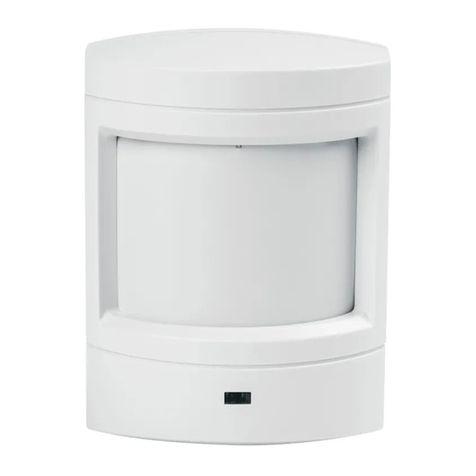
Bosch
Bosch DS924i installation instructions
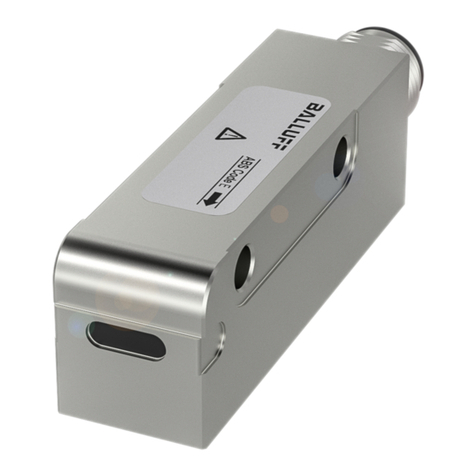
Balluff
Balluff BML SGA-AEZ1-LZZZ 1 Series user guide

WimTec
WimTec Santec Motion Installation and operating instructions
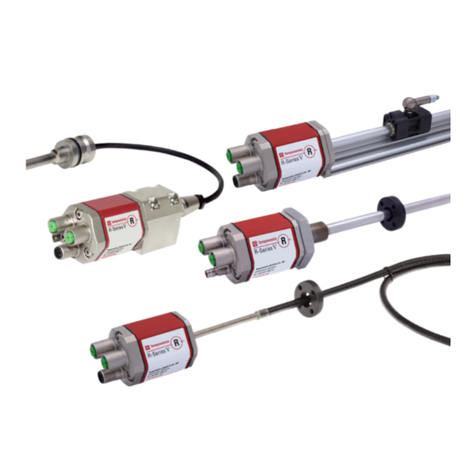
Amphenol
Amphenol Temposonics V POWERLINK R Series Operation manual
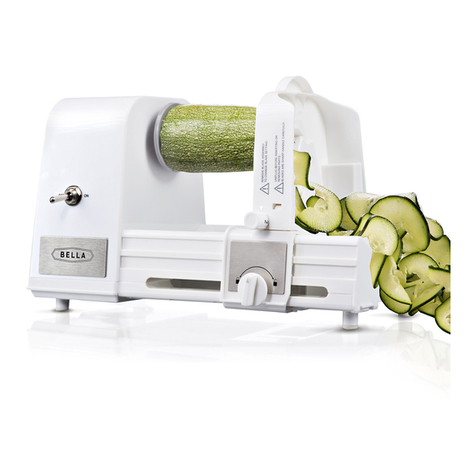
Bella
Bella 14641 instruction manual
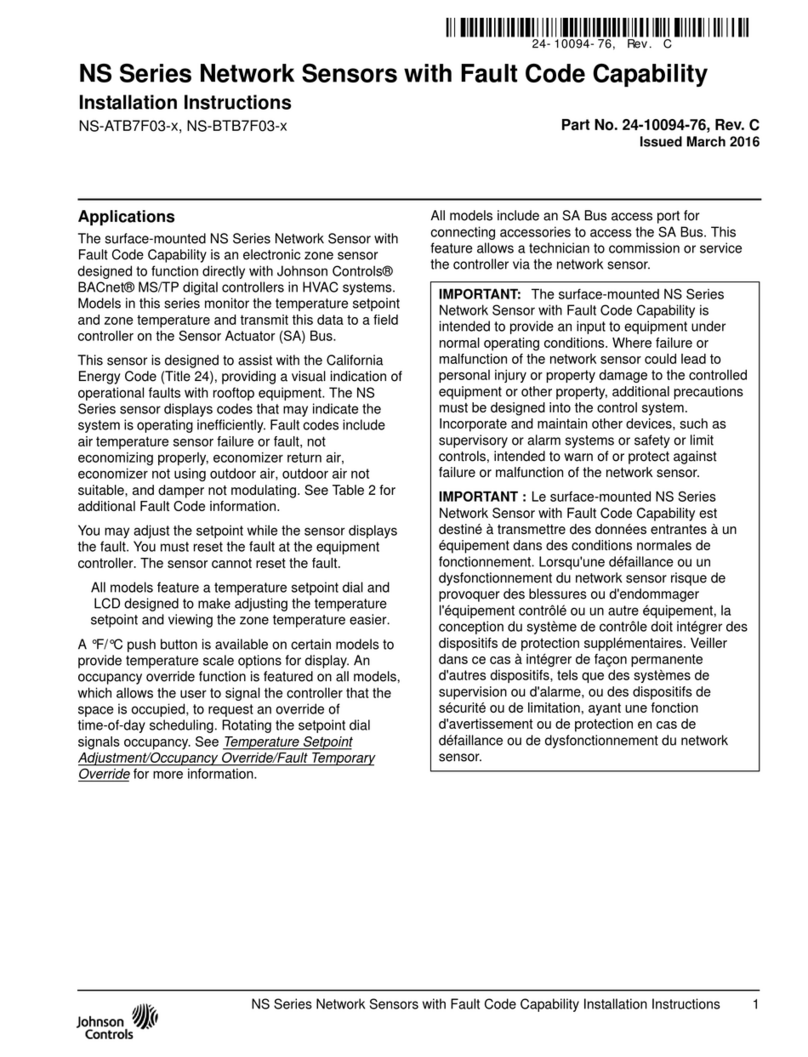
Johnson Controls
Johnson Controls NS Series installation instructions
